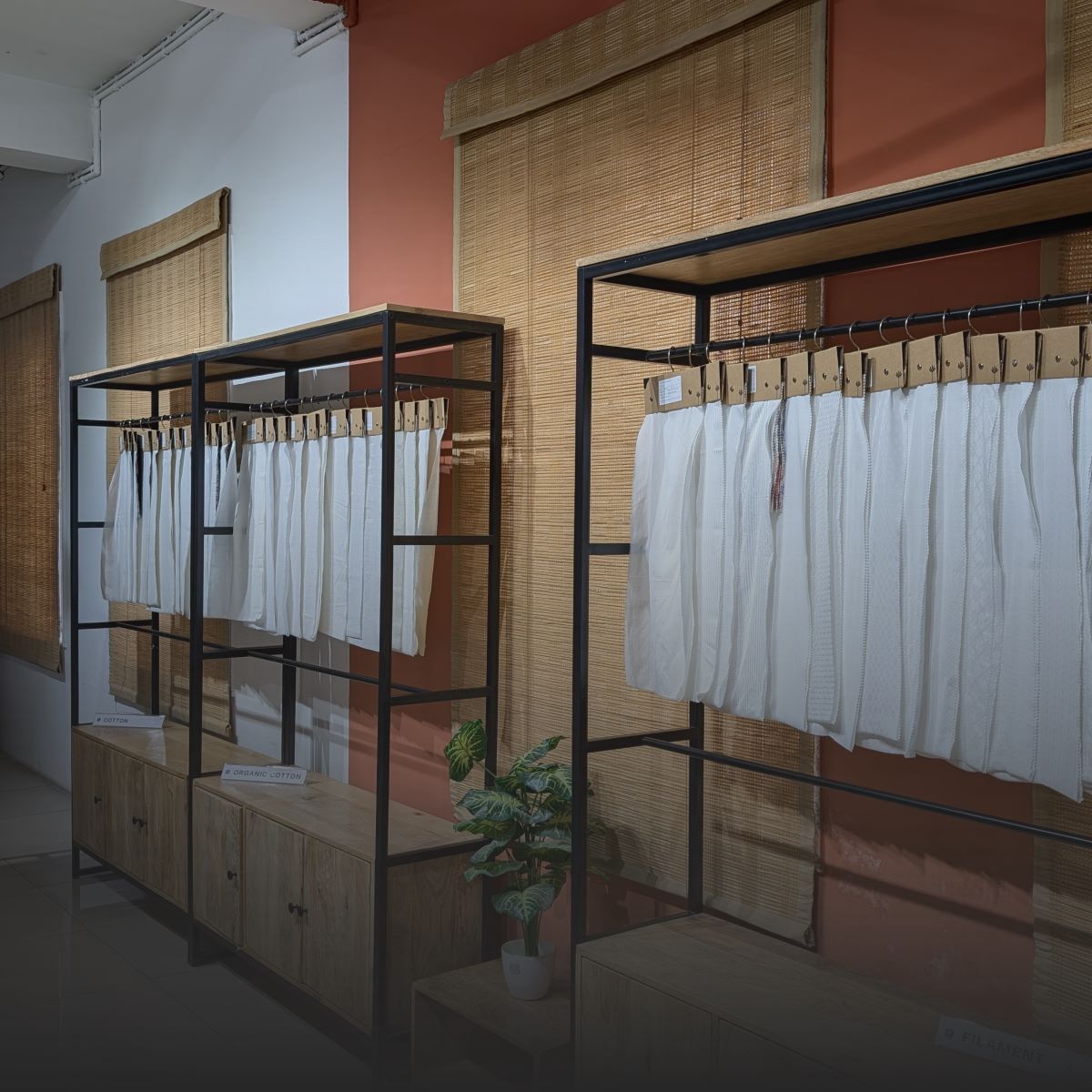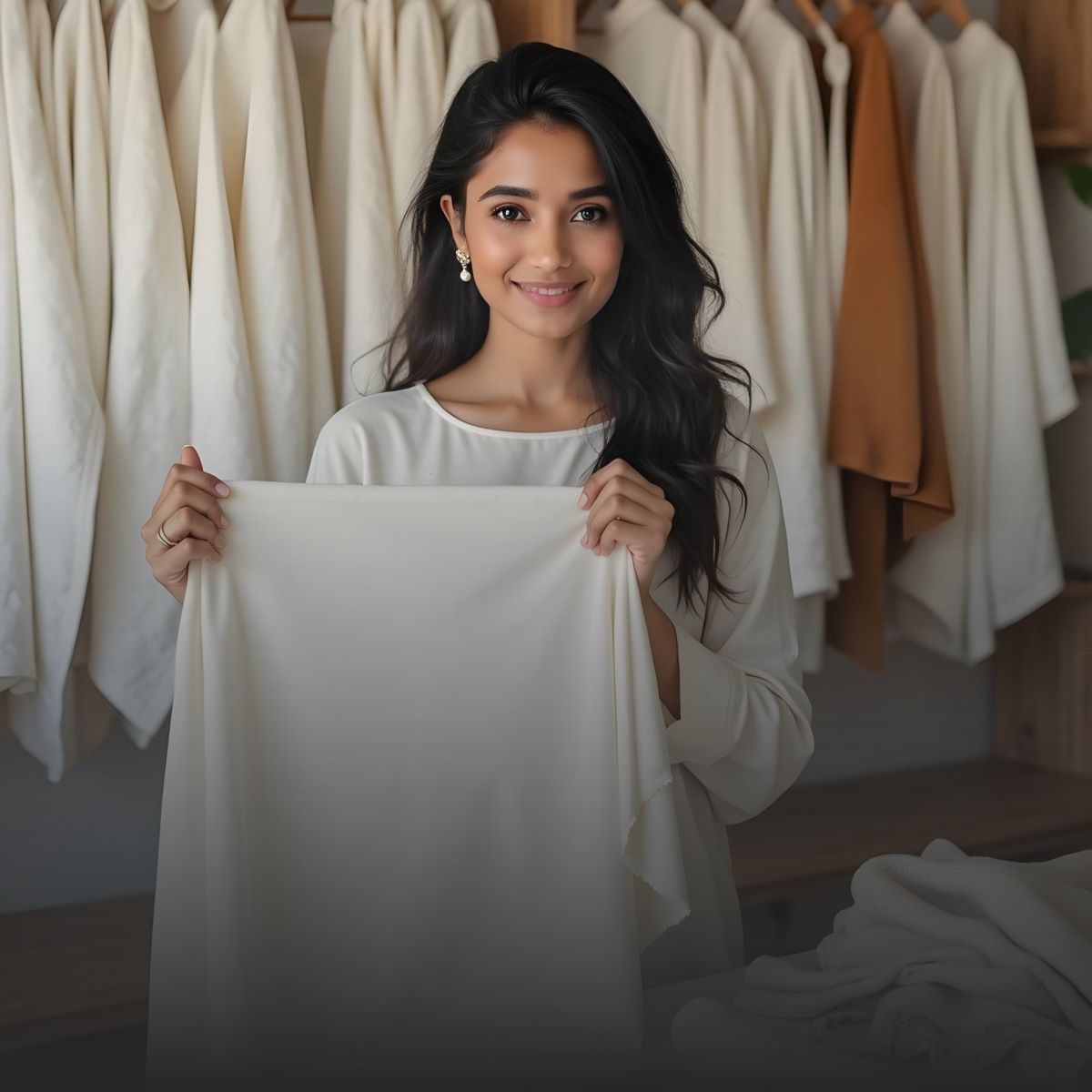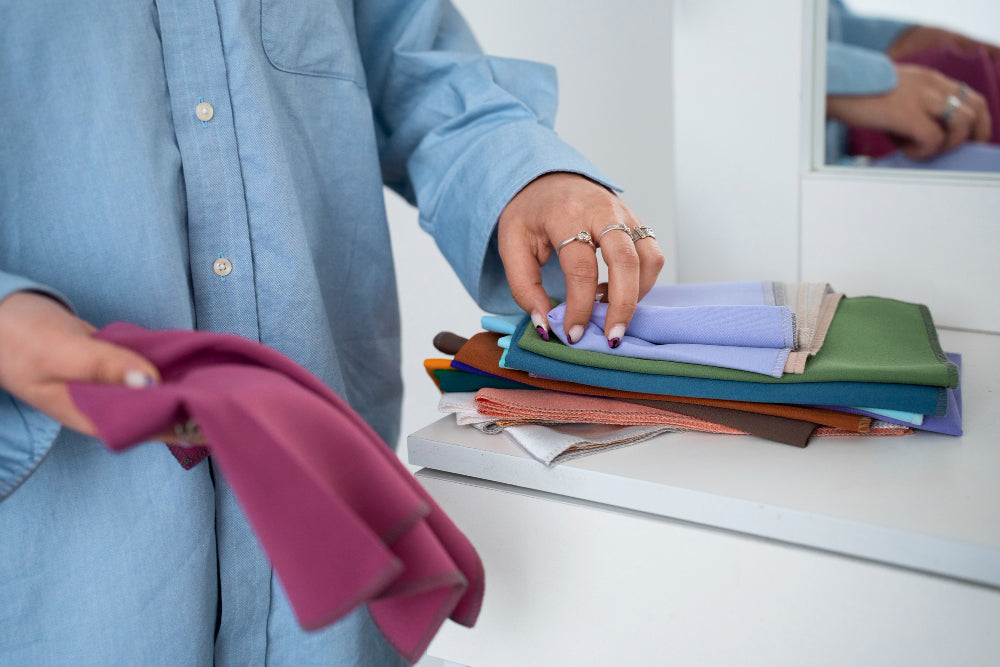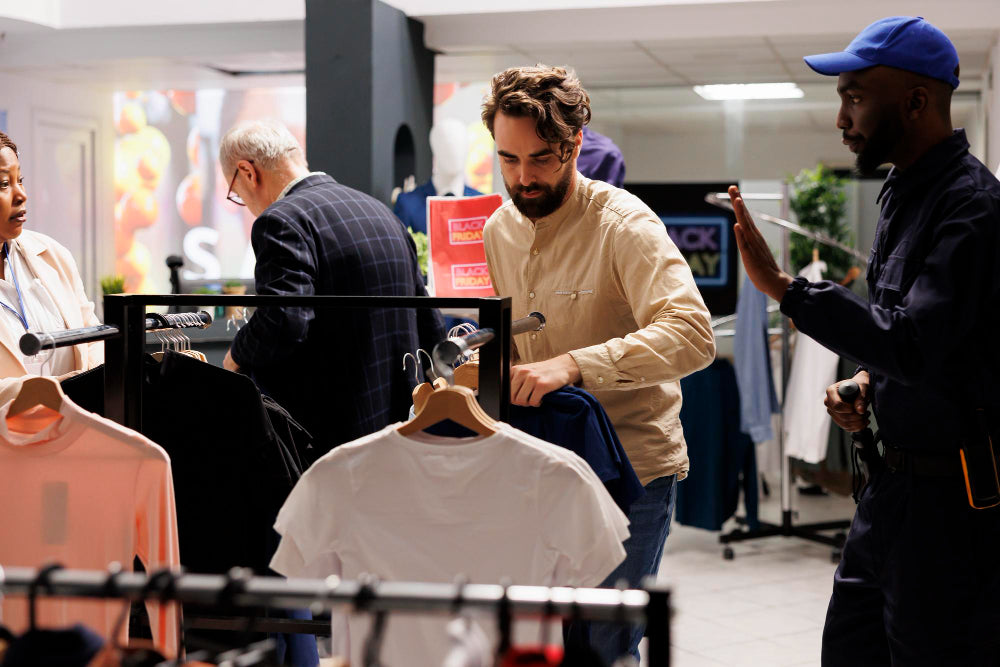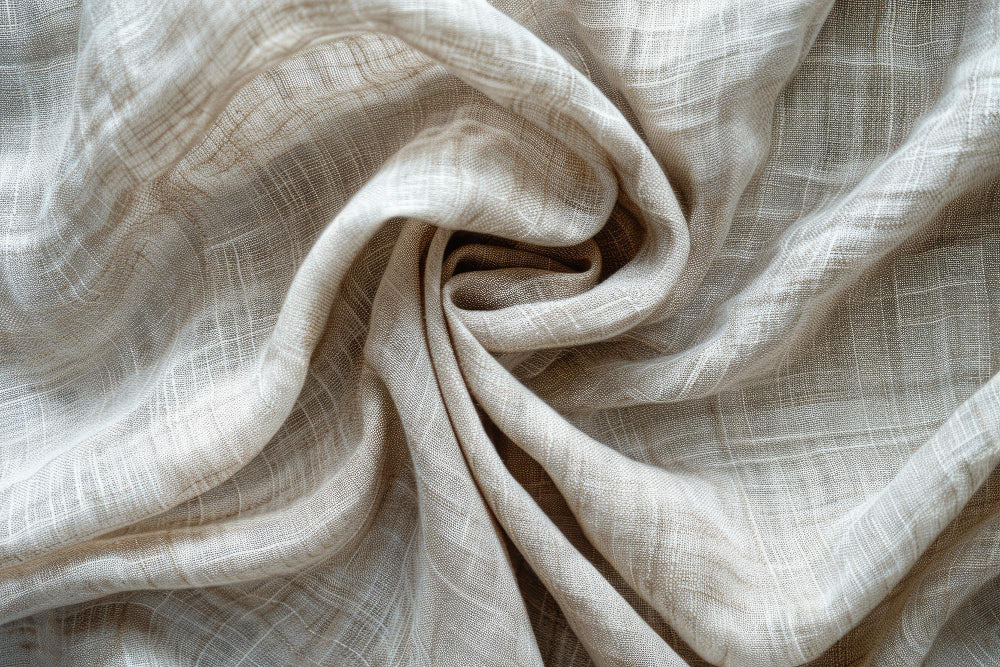Los Angeles has become the center of independent fashion, with cutting rooms in Downtown LA and workshops in Culver City and Silver Lake. New designers, famous stylists, and conscious brands are changing the way clothes are made. Instead of mass production, they are moving toward small runs, customization, and on-demand creativity.
A strong idea called Low MOQ fabrics (Minimum Order Quantity) is at the heart of this change.
With low MOQ sourcing, new designers can make professional-quality collections without the pressure of huge fabric investments.
In the Los Angeles fashion industry, access to smaller fabric quantities with customization and certification is redefining what's possible. This is true whether it's a streetwear brand trying its first drop or a sustainable brand releasing a capsule collection.
Understanding Low MOQ Fabrics
Fabric mills used to have high minimums, usually 1,000 to 3,000 meters per color or design, which favored big fashion houses with lots of money.
But micro-trends, sustainability, and speed are what the fashion world needs right now. Because of this, Low MOQ fabrics, which usually come in lengths of 50 to 200 meters per design, are great for modern clothing companies.
Why MOQ Matters
MOQ tells you how little of an order a company or supplier will take. When it comes to new brands, big MOQs mean:
- Cash tied up in unsold inventory
- Limited creative exploration
- Delayed product launches
Low MOQ sourcing, on the other hand, lets Los Angeles designers get high-quality textiles without breaking the bank. This means they can try, test, and launch their designs with confidence.

Why Los Angeles Designers Are Embracing Low MOQ Sourcing
Los Angeles is more than just the entertainment capital of the world; it's also a global fashion hub with over 4,000 active clothing manufacturers and design studios. The creative energy and tech-savvy businesspeople in the city make it perfect for nimble, small-batch fashion production.
These low MOQ fabrics are what are inspiring LA's new designers:
1. Creative Freedom Without Overhead
Designers who work on their own can try out different fabrics, colors, and prints without committing to massive yardage. Small runs let you be creative without the risk of overstocking. They can be anything from denim jackets to flowy vacation dresses.
2. Rapid Time-to-Market
Trends on TikTok can change in just one week in Los Angeles. Low MOQ sourcing lets brands produce, test, and pivot faster than bulk-based supply chains.
3. Cost-Efficient Launching
Designers don't have to buy rolls they might not use. Instead, they can allocate funds toward sampling, marketing, or branding, which will ensure long-term financial growth.
4. Sustainability at the Core
California's growing eco-friendly trend is in line with making only what is needed. Low MOQ sources cut down on waste and support slow fashion values, which is a big draw for the ethical design community in Los Angeles.
5. Perfect for Capsule Collections
The low MOQ approach is excellent for limited-edition drops, collaborations, and micro-seasonal edits because it lets smaller labels build exclusivity and audience engagement.
The Shift Toward On-Demand Fashion in LA
The fashion industry in Los Angeles is moving toward flexible, data-driven, and sustainable production.
Boutique clothing makers like Argyle Haus, Euphoric Colors, and Lefty Production Co. have pushed for small-batch garment manufacturing, which lets brands make clothes locally and accurately.
But getting the right fabric at the right MOQ is still the first and most crucial step. This is where global sourcing platforms like Fabriclore are making a difference.
Fabriclore: Empowering Los Angeles Brands with Mill-Direct Low MOQ Fabrics
For emerging designers, access to quality textiles defines the difference between concept and collection.
Fabriclore, a tech-enabled fabric sourcing platform, bridges that gap by connecting Indian certified mills with global designers, including many in Los Angeles and across North America.
Why Fabriclore Stands Out
- 10+ years of expertise in sourcing, dyeing, and printing
- Over 500 global brand collaborations
- Low MOQ: starting at 100 meters per design
- Certified fabrics — LENZING™, GOTS, OEKO-TEX®, and GRS
- Customization available: GSM, width, color, texture, and digital printing
- End-to-end apparel manufacturing: from fabric to finished garments
Designers in Los Angeles can source, customize, and produce globally certified fabrics with Fabriclore without having to leave their studio.

Types of Low MOQ Fabrics Available for LA Designers
Fabriclore has a catalog with thousands of cotton, linen, viscose, and sustainable fabrics that can be ordered in Greige, RFD, Dyed, or Printed styles.
|
Fabric Type |
GSM Range |
Key Attributes |
Ideal Use |
|
Organic Cotton |
80–220 |
Breathable, versatile |
Tees, shirts, kidswear |
|
Linen |
120–250 |
Natural, eco-friendly |
Resortwear, home textiles |
|
Tencel™ Lyocell |
100–200 |
Silky, sustainable |
Loungewear, dresses |
|
LENZING™ Modal |
90–180 |
Luxurious drape |
Casualwear, blouses |
|
EcoVero™ Viscose |
80–200 |
Low-impact viscose |
Printed tops, skirts |
|
Cotton-Linen Blends |
110–230 |
Balanced texture |
Everyday wear |
|
Recycled Poly Blends |
100–200 |
Stretch, durability |
Activewear, uniforms |
For export, these fabrics are mill-dyed, digitally printed, and quality-tested, which ensures that every order, no matter how big or small, is the same.
Technology Meets Sourcing: Fabriclore's Digital Approach
Fabriclore uses digital tools to make buying in small batches just as efficient as making things on a large scale.
1. AI-Driven Fabric Recommendations
Fabriclore's method looks at style trends, material behavior, and demand patterns to find the best fabrics for each brand's needs in terms of design and climate.
2. 3D & Digital Sampling
LA designers don't have to wait weeks for actual swatches because they can see digital swatches, color-matched Pantone options, and 3D renderings ahead of time. This cuts the time it takes from 3–4 weeks to less than 10 days.
3. Transparent Supply Chain
IoT and blockchain-based systems keep track of production in real time, from Greige to RFD to dyed or printed batches. This makes sure that everything can be seen and tracked.
4. Seamless Communication
Integrated screens let designers, mills, and manufacturing teams work together online, so there is no need for the long emails that are common in traditional sourcing.
The Benefits for L.A. Fashion Startups
|
Business Goal |
Low MOQ Solution |
|
Launching first capsule |
Start with 100m per design and custom fabrics |
|
Testing new prints |
Use digital sampling to visualize before printing |
|
Reducing waste |
Order only what’s needed; zero overstock |
|
Maintaining sustainability |
Source certified organic or LENZING™ fabrics |
|
Scaling globally |
Fabriclore offers export-ready documentation |
|
Managing cash flow |
Avoid bulk commitments; reinvest in brand growth |
Step-by-Step: How LA Designers Can Source Low MOQ Fabrics
- Define Your Fabric Brief: Decide fiber composition, GSM, width, finish, and color needs.
- Request Swatches or Digital Samples: Fabriclore offers both physical swatches and virtual previews.
- Customize with Pantone Matching: Share your color palette for dyeing or printing consistency.
- Approve and Confirm MOQ: Begin with 100–200 meters per design — perfect for pilot runs.
- Receive Export-Ready Fabrics: Fabrics are shipped globally with all documentation to support easy import to the U.S.
Case Study: How an LA Label Scaled with Low MOQ Fabrics
A streetwear brand in Los Angeles planned to release a three-piece collection made from eco-friendly cotton-linen mixes.
By working with Fabriclore, they were able to:
- 70/30 cotton linen that was sourced at 115 GSM
- Through digital previews, sampling time was cut by 60%.
- 20% off the cost of building it
- Reached the same dye shades for return orders
The brand now sells through many online stores, but they still stick to their small-batch sustainability and premium quality standards.
Sustainability as a Competitive Advantage
The eco-fashion movement is centered in Los Angeles, where people want materials that can be tracked and have little effect on the environment.
The fabrics in Fabriclore's catalog have been approved by LENZINGTM, GOTS, OEKO-TEX®, and GRS, which means that they all meet world standards for sustainability.
Sustainable Options Include:
- Organic Cotton: Pesticide-free and biodegradable
- Tencel™ Lyocell: Closed-loop fiber from wood pulp
- EcoVero™ Viscose: 50% less carbon emissions
- Bemberg™ Cupro: Recycled cotton linters
- Hemp Blends: Minimal water use, maximum durability
These options give LA brands the chance to be a part of the global sustainable fashion movement while still meeting the style and quality expectations of customers.
Challenges in Low MOQ Sourcing (and How to Overcome Them)
|
Challenge |
Solution |
|
Slightly higher per-meter cost |
Focus on reduced inventory & faster sell-through |
|
Limited availability for rare fabrics |
Use Fabriclore’s sourcing network for alternates |
|
Shade variation risks |
Use digital Pantone matching and mill-level QC |
|
Logistics for import |
Fabriclore manages export documentation & delivery |
These problems can be turned into manageable, scalable steps toward growth if you work with an experienced sourcing tool.
Why Fabriclore Is the Ideal Sourcing Partner for LA Fashion Labels
Fabriclore is different from other wholesalers because it offers an integrated digital sourcing experience, which includes:
- Customization
- Sustainability
- Scalability
- End-to-end transparency
Fabriclore makes it easy for small and medium-sized clothing companies in Los Angeles to move from concept to collection. They have over 500 global brand clients, which include boutique designers and private labels.
Fabriclore has the speed, support, and sourcing expertise to help you reach your goals, whether they are to start a 50-piece line or go global.
Final Thoughts
Los Angeles fashion will be small, innovative, and eco-friendly in the future.
Independent designers can use low MOQ fabrics to make things with confidence, try ideas quickly, and make sure that their creativity and production are in sync.
Fabriclore and other platforms like it are changing what it means to source widely by giving LA brands access to mill-direct fabrics, custom development, digital sampling, and export-ready logistics.
Low MOQ sourcing isn't just helpful for designers who are trying to find the right balance between creativity and scalability; it's the foundation for sustainable growth in modern fashion.
FAQs — Low MOQ Fabrics in Los Angeles
1. What Does Low MOQ Mean For Fabric Sourcing?
Low MOQ means that suppliers let you buy less fabric, usually between 50 and 200 meters per design. This is great for small brands, samples, or capsule launches.
2. Why Is Low MOQ Sourcing Essential For Los Angeles Fashion Startups?
It lets new fashion labels try designs without spending too much money, avoid overproduction, and stay flexible in the fast-paced LA fashion market.
3. Can Designers Customize Fabrics With Low MOQ Orders?
Yes. Even small orders can have Pantone coloring, digital printing, GSM changes, and finish customizations made with Fabriclore.
4. Are Low MOQ Fabrics Sustainable?
A lot of them are. Fabriclore has eco-friendly choices like Organic Cotton, TencelTM, and LENZINGTM Modal to make sure that style and sustainability go hand in hand.
5. How Long Does Fabriclore Take To Deliver Low Moq Fabrics To Los Angeles?
Most of the time, sampling takes 10–15 days, and bulk orders with all the necessary export paperwork come in 4–6 weeks.
We also happen to be a magnet for suggestions, and would love to catch yours….throw us yours on hello@fabriclore.com
